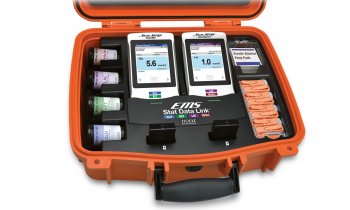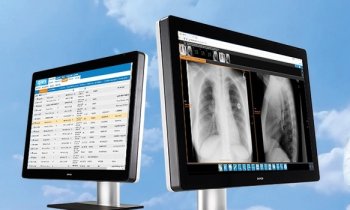Turning data into knowledge
What connects these: dementia research; the development of a procedure for fast, cost efficient gene sequencing; protein research; modern IT infrastructures, and the determination of reimbursement structures for medical procedures? Answer: Two extremely small common denominators: Bits and bytes. This means data and, increasingly, mass data, which now forms the foundation of medicine. The question as to the potential, challenges
and use of these small units of data is of interest to science, politics and industry alike.

‘Researchers assume that in the year 2050 around 70% of people will live in so-called mega cities. This scenario entails enormous challenges regarding the lifestyle in those cities as well as on the periphery. Based on these assumptions, IBM developed a novel and industry-specific approach at the beginning of the year,’ said Manuela Mueller-Gerndt, Healthcare Leader of IBM Deutschland GmbH, during an EH interview. Meike Lerner asked
her about this and her predictions as to the role technology companies will play in shaping the future healthcare market.
“We are dealing with the aggregation, the storage of mass data, which we store and archive on secure platforms. Moreover, we develop concepts of how to use this data to generate relevant information that we can put at the decision makers’ disposal. This ranges from strategies for the capture of chronic diseases to questions as to how much such a disease costs, what patient care should be like and how successful a treatment concept is. In short:
Our task is to transfer data into information and thus into strategies with potential for the future that ensure the healthcare of tomorrow – with the inclusion of all those involved in the healthcare market.
One example of this is telemedicine, which will play an increasingly important role. In Germany, telemedical care concepts are not normally reimbursed by the insurers as standard; there is always a requirement for an individual contract that justifies a certain procedure. To confirm the benefit and to ensure that the procedure can eventually be included in the standard range of services covered requires encouraging the equipment manufacturers as well as creating incentives for doctors and hospitals to use the procedures. All these decisions are made on the basis of valid data and the resulting concepts, which turn a pilot project into a viable business case that then can be used during negotiations with the service providers.
A further example of this can be found in the field of oncology: Personalised medicine is the term everyone is using here – even the medical insurers. However, proving evidence of benefit is not always easy as around 40% of studies which try to establish this miss the mark. And this is by all means not because the procedures and treatments are not actually successful, but in most cases because of a lack of accurate data management and data handling.
IBM today and tomorrow
We do not act as a direct provider to end users; we moved away from this type of strategy more than ten years ago. What we offer is ideas and concepts; how new trends -- Cloud Computing, for example -- can be implemented in practice. We then identify industry partners from our network to interface with the customer and then jointly implement the solutions. Even where we deliver middleware, the front end almost never has our label – a reason why many users don’t even know they are working with IBM technology. A further ‘product’ is our strategic consulting. As we are not a provider of end products, we are in a neutral position with regards to hospitals, which allows us to analyse processes and workflows and to develop optimisation concepts. In the US, for example, we have 400 doctors who work as consultants for clinical establishments and companies. This is a competence
that we have also been able to build on in Germany over the last few years. For instance, the Marien Hospital in Stuttgart has tasked us with their entire strategic consulting requirements – and with success.
Furthermore, something that often tends to stay in the background is our research activity. With Roche, we are currently looking into a procedure that will make it possible to carry out gene sequencing in under an hour – and for less than $1,000. Our objective is to research new algorithms and develop specific chip technologies. Another current topic is developing a community for causal research into dementia. Our tasks include getting leading researchers around a table, and we are also working on being able to provide sufficiently complex computation to achieve a sensible evaluation of large data sets and diagnostic images.
In short: IBM always becomes involved when there is a need for intelligent infrastructures in the healthcare market, and where analysis helps to safeguard crosssector networking to benefit patients.”
18.11.2010











